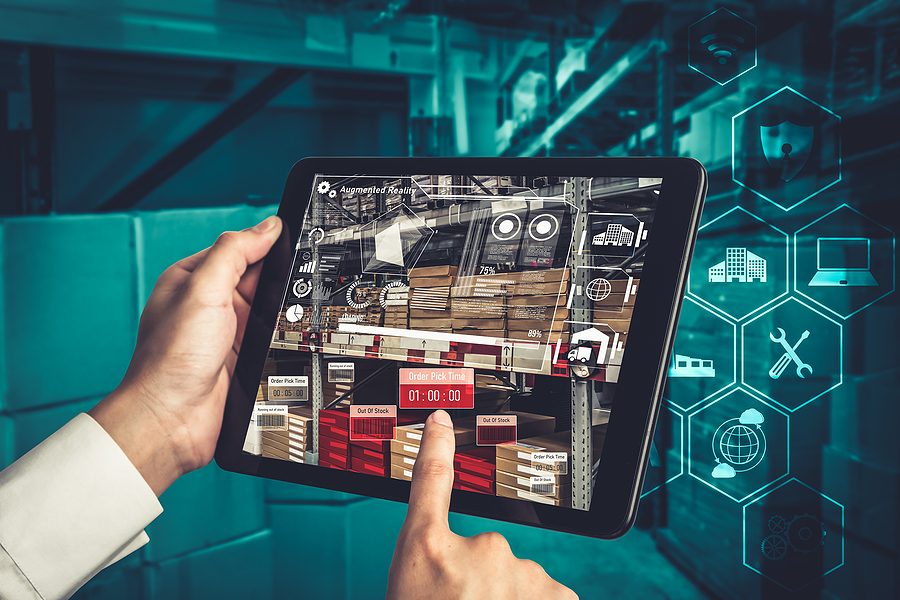An article by Fabio Caversan, originally posted at Forbes website.
The explosion of new tools and technologies powering Industry 4.0 innovations promises transformational leaps forward in industries from manufacturing and medicine to technology and telecommunications.

Powering those advances is data — specifically, the ability to gather, manage and leverage vast volumes of data that yield new insights and unlock new possibilities. One industry where increasingly powerful and sophisticated data analytics is already having an outsized impact is retail. That influence will grow, as data analytics tools and technology solutions aren’t just meeting the needs of a rapidly evolving industry, but they’re fueling trends and tactics that are accelerating that evolution.
Retail Is Changing
To understand why data analytics (and associated ecosystems of tools and technologies) is playing such an important role — and why it will play a foundational role going forward — we must first appreciate where retail’s biggest structural changes are coming from.
In recent years, competitive pressures from online retailers have prompted many brick-and-mortar traditionalists to expand their virtual presence. This accelerates the pace of change, which is beginning to shift longstanding business models. Until the last decade, the most successful retailers were consistently those most skilled at sourcing, shipping and selling desired products in physical locations. With routes to market evolving, the recipe for success has changed, disrupting this legacy business model. Retailers will need to evolve at pace and become either platform ecosystems, true omnichannel players or smaller niche-focused specialists.
That transition will require both capital and capabilities — the latter fueled largely by powerful new technologies and data analytics.
Pandemic Pressures
Given the existing pressures across an evolving retail landscape, the impact of Covid-19 was understandably impactful. It’s likely the pandemic will forever alter the contours of retail’s brick-and-mortar landscape. The culling of weak retailers will continue, and the distinction between pandemic winners and losers will become starker.
While many physical stores will return to growth in coming years, those looking to drive growth solely through physical stores are unlikely to thrive.As more brands recognize the value of an omnichannel model, the distinction between direct-to-consumer operators and traditional retailers will blur. The e-commerce boom will continue, but new challenges (data security, tech-savvy competitors) will emerge. Generalist giants will try to consolidate 2020 gains, but pandemic pivots may not stick. New concepts will blossom — especially brands and services focused on personal health and self-care — and new owners will take center stage.
But the most significant changes will come from evolving customer expectations. Traditional consumption drivers that shape consumer purchasing decisions — value, choice and convenience — will be joined by others playing a more prominent role, such as experience, and by new considerations, including privacy/security and purpose.
Purpose goes beyond profit and differs from your company vision or corporate mission. It explains why a firm exists, encapsulating a positive brand impact on people’s lives, on society and on the environment. Today’s customers increasingly want businesses to stand for something bigger than the products they sell. Consider the eye-opening statistic that nearly two-thirds of consumers say they’d buy or boycott a brand based solely on its position on social or political issues. The pandemic has only sharpened consumer preferences for purpose-driven organizations.
Data Connections
Understanding these new realities — and thriving in a retail landscape where the ground has shifted dramatically in a short period of time — requires not just an intimate understanding of evolving customer preferences and priorities, but a consumer connection that’s highly sensitive to the speed and significance of those changes. That’s where data analytics comes in.
Digital marketing using big data and AI/machine learning allows retailers to get to know their consumers, understanding their motivations and choices at every step of the customer journey, from online browsing to purchasing. It allows retailers to show customers they know them and make that clear in how they interact and address customer priorities. It also facilitates targeted and hyper-targeted promotions, reshaping the very nature of purchasing and procuring goods and services.
The result isn’t just an increasingly omnichannel industry, but a retail landscape bursting with innovation. Innovative brands and stores are already using new tech tools to offer customer-facing AI-driven engagement; autonomous deliveries and fulfillment; personalized interactions and collaborative browsing; AR-powered shopping experiences; faster delivery; and smart-speaker shopping, voice search and other touchless interactions.
From Traditional To Tradigital
The upshot of these changes is a post-pandemic retail landscape that looks very different than a few short years ago. Today, the foundation of a successful data-and-tech-powered business model includes the following:
- Insight-driven strategies and actions.
- Innovative products and services.
- Experiential customer experience elements.
- Seamless interactions and commercial transactions.
- Robust and responsive operations and infrastructure.
- An aligned and empowered workforce.
- A digitally enabled tech architecture.
- An integrated partner and alliance ecosystem.
That final bullet is critical, as there’s real value in the rare ability to integrate data science and analytics with marketing and advertising, along with the corresponding tech infrastructure.
Today’s consumers have new ways to shop and to pay. They have newly personalized and localized marketing offers and access to more immersive and experiential retail options, with automation that delivers a better experience and more convenience.
Organizations looking to embrace this new data-focused digital experience can begin by first taking a deep dive into their own operation, identifying key metrics and measurables and understanding customer priorities and perspectives. Before investing in expensive tech, make sure you understand the contours of your own data landscape. Second, identity a trusted partner with demonstrated experience not only in digital transformations but also in the retail sector specifically.
While privacy concerns are always a challenge, data is ultimately a two-way street. If brands are using data correctly, they will be offering consumers a better experience, part of an organic, natural, mutually beneficial exchange. In this new retail world, data is the “meta currency” that brands exchange with consumers. And the transactions conducted with that currency will fuel a vibrant, dynamic and increasingly digital retail industry.



















